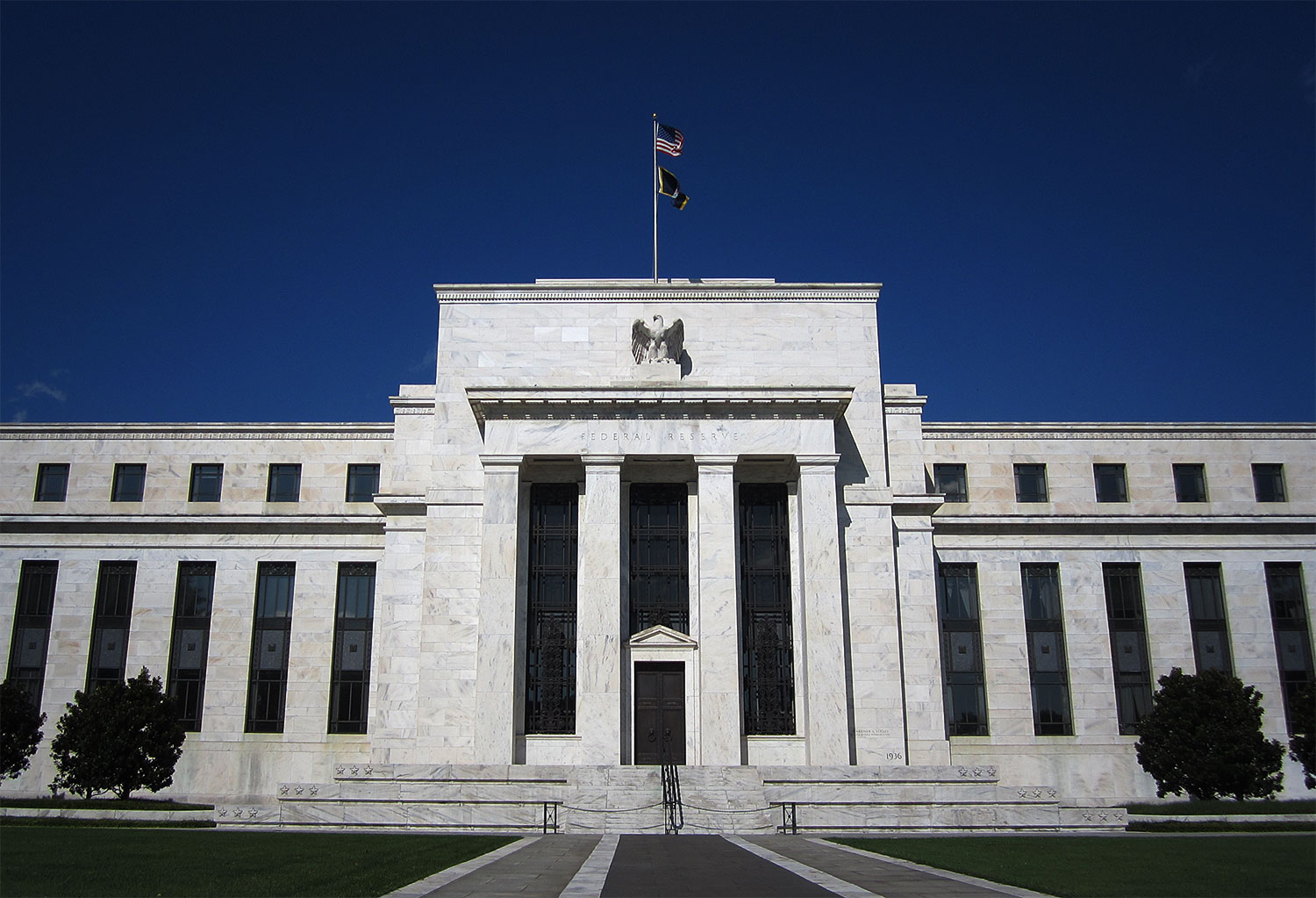Silicon Valley Bank (aka SVB) collapsed on March 10, followed by Signature Bank two days later. Fearing mass panic, the FDIC decided to make whole all deposits at both banks, even though they were insured only up to $250,000. On March 16, First Republic Bank was saved from bankruptcy when several large banks lent it $30 billion.
Although things have since quieted down, two questions remain. How many banks are in trouble, and do we face a banking crisis? Paul Krugman, writing in the New York Times on March 13, declared that SVB was not Lehman. But this is the wrong juxtaposition. The issue is whether SVB will be more like Bear Stearns in March 2008– the canary in the coal mine that dies several months before the financial crisis hits.
Unlike 2008, I am not sure if there will be a banking crisis; but I am worried. SVB looks unique because it was issued numerous warnings before it went under. On the other hand, many banks face problems similar to SVB. Slower growth, due to higher interest rates, makes it harder for borrowers to repay bank loans. And people remain on edge about the safety of their money. One telling study of 4,800 banks found that if uninsured deposits were withdrawn at these banks, 1,619 would fail.
It also needs to be remembered that bank crises have occurred regularly throughout history. They seem to arise from the very nature of banking. Banks hold money for people and businesses in the form of deposits. Then they lend money to people, business firms, and the government.
Two things can unsettle this process. Since banks hold little cash relative to their deposit liabilities, depositors can’t be paid if they come en masse to withdraw their money. This constitutes a liquidity crisis, famously depicted in the Jimmy Stewart movie “It’s a Wonderful Life”.
Numerous policies have been devised to subdue liquidity problems. Banks in trouble can borrow from other banks, as happened with First Republic. Central banks serve as lender of the last resort, a role the Federal Reserve assumed when SVB and Signature Bank failed. And deposit insurance seeks to reduce depositor fears, so that their money stays in their bank.
The bigger problem is that banks tend to make risky loans that don’t pan out, or bad loans that will never get repaid. These banks eventually become insolvent. The best example of this is the 2008 financial crisis, brought on by bad mortgage loans. As home prices fell, and people abandoned their homes, total bank assets dropped below what banks owed their depositors. Like the many homeowners to whom they lent money, many banks were under water.
SVB looks a lot like the run on Jimmy Stewart’s bank. It lent the Federal government money by purchasing their long-term bonds. Buying government bonds is the safest thing banks can do with depositor money. However, SVB violated a cardinal rule of finance– diversify, or don’t put all your eggs in one basket.
Although safe, government bonds are not risk-free. SVB valued them at what they would receive when the bond matured in several years. However, when interest rates rise, bonds lose value temporarily. A slowing economy, due to higher interest rates, led to bank withdrawals and forced SVB to sell bonds in order to pay depositors. On March 8, SVB lost $1.2 billion doing this. A liquidity problem thus became an insolvency problem.
When this became known, via Twitter, we had our first social media bank run. With nearly 95% of SVB deposits not covered by insurance, people scrambled to get their money before nothing was left. The result was a death spiral. As money left SVB, more bonds had to be sold at a loss; and the more money SVB lost, the more deposits left the bank. SVB had to be shut.
Many banks now face problems similar to SVB. Lending money to these banks won’t solve the problem because the banks will pay higher interest rates than they receive from their loans. To prevent a bank panic, and large losses when banks sell assets, rate hikes must stop and the Fed needs to consider cutting rates.
Having said this, there is no escape from banking problems. People and firms need loans to survive; loans keep the economy growing and generate jobs. But lending is a risky business that attracts risk takers. Avoiding future problems requires keeping banks from taking excessive risks with other people’s money. Many suggestions have made about how to do this.
Banks can be required to hold more cash and lend less. Alternatively, they can be required to have more skin in the game, or more capital, when lending. This puts investors, or bank owners, at greater risk if the bank goes under. Somewhat ironically, this last suggestion would not have saved SVB, since government bonds are regarded as good as cash and don’t require banks to hold capital.
Another possibility is to increase deposit insurance. The FDIC was created in 1933. It insured deposits up to $2,500 per person, per bank. Today it insures deposits up to $250,000. Increasing deposit insurance, however, can create problems because it reduces the number of people monitoring bank behavior as depositors don’t need to worry about losing their money.
These policies may do some good, but they are mere band-aids. Preventing bank failures requires tougher regulation by the government.
All banks should face regular and rigorous stress tests. These tests model what would happen to the bank under various circumstances; banks must demonstrate that they can weather large shocks. SVB would have failed any reasonable stress test. Its holdings of so many long-term government bonds was a disaster waiting to happen. As noted above, it contradicted the most fundamental principle of finance. SVB should have been forced to diversify its loan portfolio long before a bank run killed it.
Also, stress tests should be performed by an independent organization, preferably the Federal Reserve. Letting SVB perform its own stress tests, using whatever assumptions it wished, contributed to its demise. A 2018 bank reform permitted this. Just as repealing Glass-Steagall let banks make riskier loans and laid the groundwork for the 2008 financial crisis, the Economic Growth, Regulatory Relief and Consumer Protection Act, signed by President Trump in May 2018, let many banks do their own stress test, setting the stage for our current banking problems.
Finally, and most important, bank executives must be held accountable in the only way that matters to them– their checkbook. Many bank crises stem from inept or corrupt managers, who approve loans that never should have been made. Limiting the pay of senior bank executives to some small multiple of median firm pay, would reduce incentives for bank executives to gamble with depositor money in the hope of great financial rewards. And paying executives with a good deal of company stock that cannot be sold for many years would provide an incentive to take a long-term perspective on lending. A policy like this would have either stemmed the risky behavior of SVB, or led to large losses for SVB executives when the bank failed and their stock holdings became worthless.
Even with all this, we are unlikely to avoid bank crises entirely. In the last 45 years we have had the S&L crisis, Long-Term Capital Management’s failure, the dot.com bust, and the 2008 financial crisis. Whether a 2023 financial crisis will be added to the list remains to be seen. The best we can do is reduce the likelihood of a crisis and hope for the best.
Steven Pressman is part-time professor of economics at the New School for Social Research, professor emeritus of economics and finance at Monmouth University, and author of Fifty Major Economists, 3rd edition (Routledge, 2013).







0 Comments